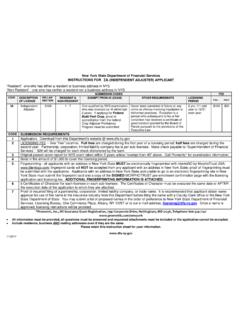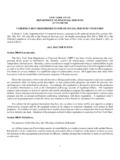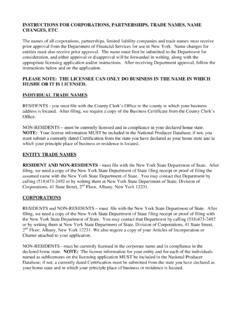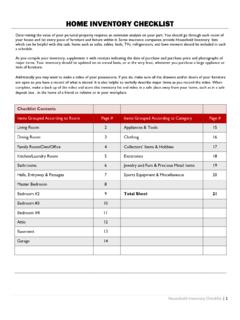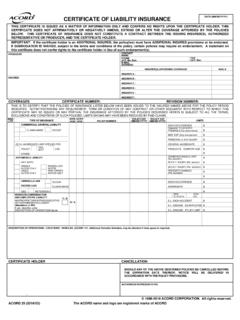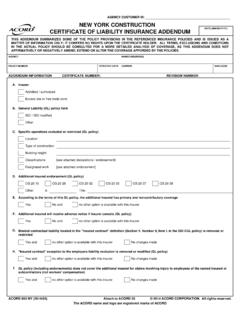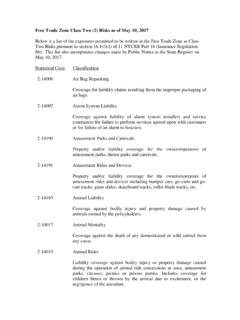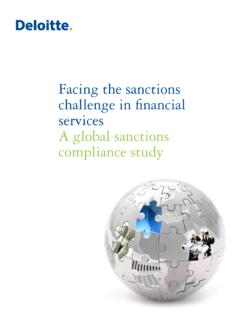Transcription of NEW YORK STATE DEPARTMENT OF FINANCIAL SERVICES …
1 1 NEW york STATE DEPARTMENT OF FINANCIAL SERVICES PROPOSED 3 NYCRR 419 SERVICING MORTGAGE LOANS: BUSINESS CONDUCT RULES I, Linda A. Lacewell, Acting Superintendent of FINANCIAL SERVICES , pursuant to the authority granted by Sections 10, 11, 14, and Article 12-D of the Banking Law and Sections 102, 201, 202, 301, and 302 of the FINANCIAL SERVICES Law, do hereby promulgate Part 419 of Title 3 of the Official Compilation of Codes, Rules and Regulations of the STATE of New york , to take effect upon publication of the Notice of Adoption in the STATE Register, to read as follows: (ALL OF THE FOLLOWING MATERIAL IS NEW) Definitions Escrow accounts Crediting of payments Statement of account Fees Borrower complaints and inquiries Residential mortgage loan delinquencies and loss mitigation efforts Volume of Servicing Report Books and records and annual reports Servicing prohibitions and the duty of fair dealing Oversight of third-party providers Mortgage servicing transfers Affiliated business arrangements Definitions For purposes of this part, unless otherwise stated herein, terms shall have the same meaning as set forth in Part 418 of this title.
2 (a) Affiliated business arrangements means any business arrangement between a servicer or mortgagee and a person or entity that directly, or indirectly, through one of more intermediaries, controls, or is controlled by or is under common control with the servicer or mortgagee. (b) Authorized representative means a person, including an attorney, employee or agent of a government agency, not-for-profit housing counseling organization, or legal SERVICES organization, designated by a borrower in a written authorization signed by the borrower, or any other form of verifiable authorization, to share information and communicate with a servicer on behalf of the borrower. (c) Borrower means a natural person obligated to pay a mortgage loan and, if applicable, such person s successor in interest or authorized representative when acting on behalf of such person.
3 2 (d) Business day means any day of the week except for Saturday, Sunday and any legal holiday. (e) Complete loss mitigation application means a loss mitigation application for which a servicer has received the information that the servicer reasonably requires from a borrower to evaluate the loss mitigation options available to the borrower. (f) Clearly and conspicuously means that the statement, representation or term being disclosed is of such size, color, and contrast and is so presented as to be readily noticed and understood by an ordinary consumer. (g) Loss mitigation application means an oral or written request for a loss mitigation option that is accompanied by any information required by a servicer to evaluate the loss mitigation options available to the borrower.
4 (h) Loss mitigation option means an alternative to foreclosure, including, but not limited to, a loan modification, shared appreciation mortgage modification agreement, reinstatement, forbearance, deed-in-lieu, or short sale. (i) Mortgagee shall mean the owner or assignee of a mortgage loan. (j) RESPA means the Real Estate Settlement Procedures Act of 1974, 12 section 2601 et seq. and regulations adopted thereunder, also sometimes known as Regulation X, and found at 12 Part 1024. (k) Servicer means a person engaging in the servicing of mortgage loans in this STATE whether or not registered or required to be registered pursuant to paragraph (b-1) of subdivision two of Banking Law section 590. (l) Servicing mortgage loans" means receiving any scheduled periodic payments from a borrower pursuant to the terms of any mortgage loan, including amounts for escrow accounts under Section 6-k of the Banking Law, Title 3-A of Article IX of the Real Property Tax Law or section 10 of 12 2609, and making payments to the owner of the loan or other third parties of principal and interest and such other payments with respect to the amounts received from the borrower as may be required pursuant to the terms of the mortgage loan documents or servicing contract.
5 In the case of a home equity conversion mortgage or reverse mortgage as referenced in Section 6-h of the Banking Law, Sections 280 and 280-a of the Real Property Law or 24 CFR , servicing includes making payments to the borrower. The term includes a Person who makes or holds a Mortgage Loan if such Person also directly or indirectly is the holder of the mortgage servicing rights or has been delegated servicing functions for the Mortgage Loan. (m) Single point of contact means an individual or designated group of servicer personnel each of whom has the ability and authority to perform the responsibilities described in subdivision (b) of section of this Part. 3 (n) Third-party provider means any person or entity retained by or on behalf of the servicer, including, but not limited to, foreclosure firms, law firms, foreclosure trustees, and other agents, independent contractors, subsidiaries and affiliates, that provides insurance, foreclosure, bankruptcy, mortgage servicing, including loss mitigation, or other products or SERVICES , in connection with the servicing of a borrower s loan.
6 (o) Transferee servicer means a servicer that has agreed to obtain the right to service a mortgage loan pursuant to an agreement or understanding. (p) Transferor servicer means a servicer that has agreed to, or informed that it must, transfer the right to service a mortgage loan to another servicer. (q) Plain language means written in a clear and coherent manner using words with common and every day meanings, appropriately divided and captioned reflecting its various sections, and understandable to those parties that will be receiving the content. Escrow Accounts (a) A shortage, surplus or deficiency in a borrower s escrow account shall be addressed by a servicer in accordance with the provisions of RESPA, 12 section (f). Alternatively, with the consent of the borrower, an escrow account surplus may be applied to the principal balance.
7 (b) Whenever a servicer identifies a deficiency in a borrower s escrow account that is not the result of a borrower's payment delinquency, the servicer shall conduct an escrow account analysis to determine the reasons for and extent of the deficiency and shall provide a written explanation to the borrower. The servicer shall wait 30 calendar days after providing the written explanation to the borrower before seeking payment of the funds necessary to correct the deficiency from the borrower. Crediting of payments (a) In general. All mortgage loan payments received by a servicer at the address where the borrower has been instructed in writing to make payments shall be credited on the business day received, to the extent that the borrower has provided sufficient information to credit the account.
8 For all mortgage loans originated after January 1, 2011, except when inconsistent with federal law or regulation or as provided in subdivision (d) of this section, such payments shall be credited by the servicer to the interest and principal due on the home loan before crediting the payments to taxes, insurance, or fees. (b) Reasonable payment requirements. Requirements imposed by a servicer for making payments must be reasonable. A cut-off time at the end of the business day for receipt of a mailed check at the location specified by the servicer for receipt of such check is deemed to be reasonable. 4 (c) Non-conforming payments. If a borrower fails to comply with a servicer s reasonable payments requirements that have been provided to the borrower in writing, the servicer shall credit any payment accepted by the servicer as soon as commercially practicable, but in no event later than 5 days after receipt.
9 (d) Late payments. Late payments must be credited to interest, principal, taxes, insurance and other fees before any late fee is collected. (e) Scheduled method of accounting. If a servicer uses the scheduled method of accounting, any regularly scheduled payment made prior to the scheduled due date shall be credited no later than the due date or 30 days from the date of receipt, whichever is earlier. (f) Notice of noncredit. If a servicer receives any payment on a mortgage loan and does not credit it or treat it as credited by the due date or within 30 days from the date of receipt, whichever is earlier, the servicer shall, within 10 business days of receipt, send the borrower notice by mail to the borrower s last known address indicating the reason the payment was not credited or treated as credited to the account, and any actions the borrower needs to take to make the loan current.
10 (g) Payment overages and shortages. A servicer shall establish written policies and procedures for payment overages and shortages, including unapplied funds and payments held in suspense accounts. If a servicer retains a partial payment in a suspense or unapplied funds account, the servicer shall, on accumulation of sufficient funds in any suspense or unapplied funds account to cover a periodic payment, treat such funds as a periodic payment and credit the periodic payment to the borrower s loan. (h) A servicer shall not apply funds from a suspense or unapplied funds account to pay fees until all unpaid principal, interest, and escrow amounts (if available) are paid and brought current or the loan is discharged or foreclosed. Statement of account (a) Annual statements.
